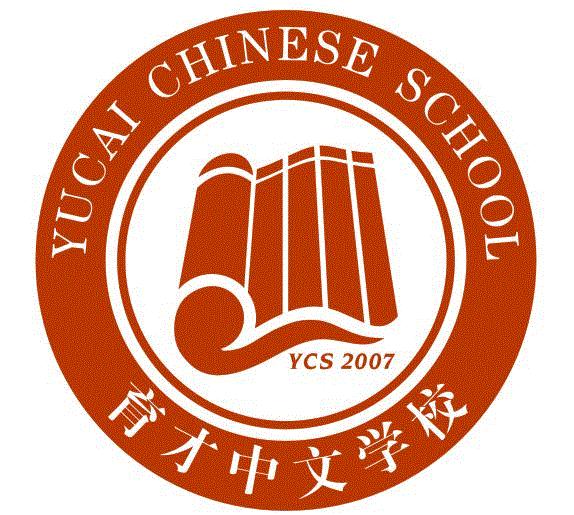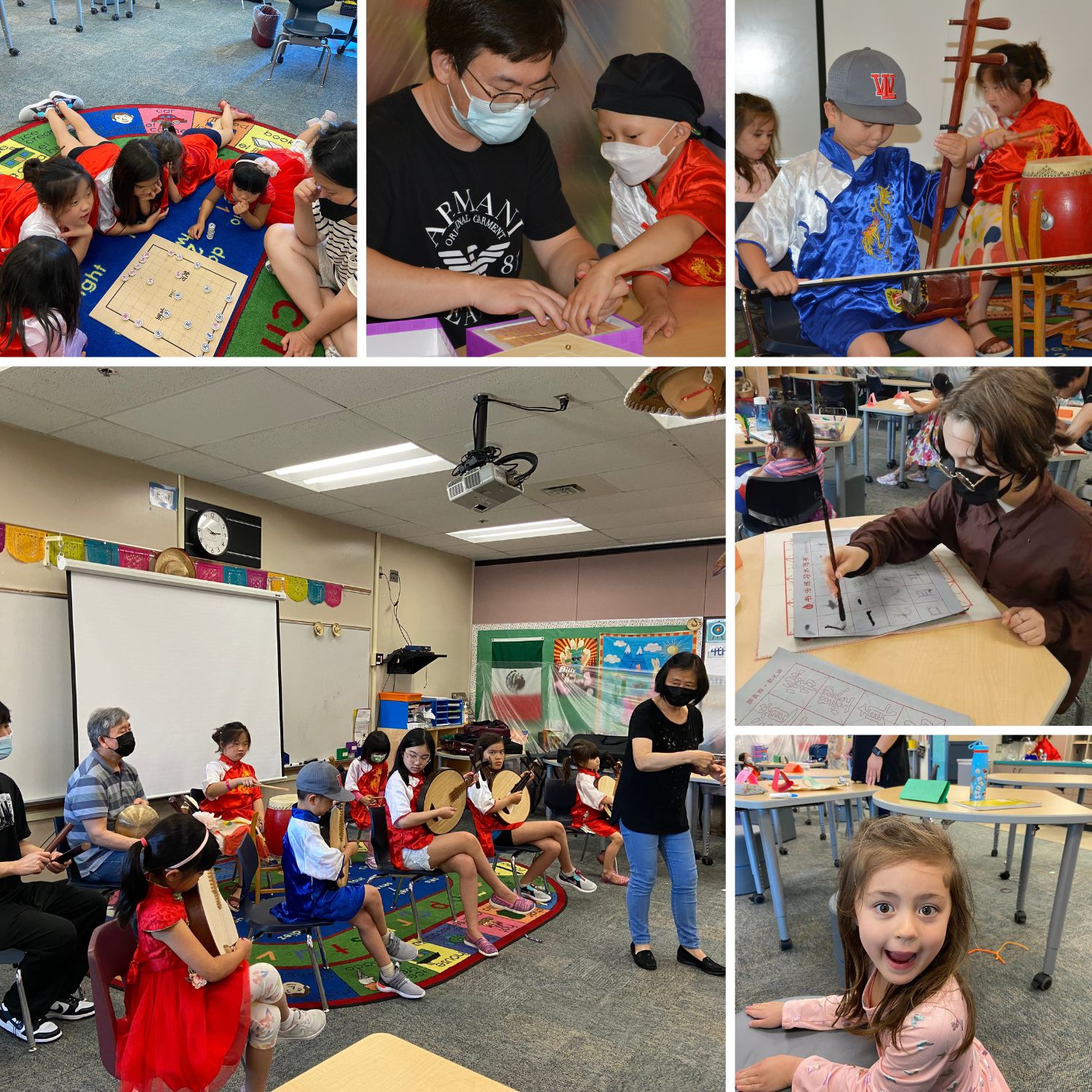




Yucai will offer eleven weeks (or sessions) of Chinese camps. Students will learn the Chinese language, culture, music, painting, dancing, chess, martial arts, etc. Students will be divided into small groups according to their age and Chinese proficiency. They may focus on speaking, listening, reading, or writing based on what is appropriate for their growth. We will help beginners learn basic conversations. Intermediate-level students will keep expanding their knowledge of Chinese through readings and other activities.Learning Chinese, music, painting, and sports skills all at one camp will make learning more fun and enjoyable. It will allow students to have a holistic learning experience. The goals of our camp are for students to 1) speak Chinese with confidence, 2) start or continue to learn Chinese in the summer to mitigate the summer learning loss, 3) be aware of and appreciate the Chinese culture, music, painting, and martial arts, 4) be physically active, and 5) develop social and teamwork skills. Below is the breakdown of the camp schedule and sample activities.
|
Week |
Sample Activities |
|
6/09-6/13 |
Chinese(Speaking, Reading Comprehension, Culture), Story Time, Outdoor Activities, Crafts, Chinese Folk Music, and Dancing |
|
6/16-6/20(No camp on 06/19) |
Chinese(Speaking, Reading Comprehension, Culture), Story Time, Outdoor Activities, Crafts, Chinese Folk Music, and Dancing |
|
6/23-6/27 |
Chinese(Speaking, Reading Comprehension, Culture), Story Time, Physical Activities, Singing, Fun Math, and Science Experiment |
|
7/7-7/11 |
Chinese(Speaking, Reading Comprehension, Culture), Story Time, Physical Activities, Singing, Fun Math, and Science Experiment |
|
7/14-7/18 |
Chinese(Speaking, Reading Comprehension, Culture), Story Time, Physical Activities, Coding, Chinese KungFu, and Paper Folding |
|
7/21-7/25 |
Chinese(Speaking, Reading Comprehension, Culture), Story Time, Physical Activities, Coding, Chinese KungFu, and Paper Folding |
|
7/28-8/1 |
Chinese(Speaking, Reading Comprehension, Culture), Story Time, Physical Activities, Chess, Chinese Painting, and Crafts |
|
8/4-8/8 |
Chinese(Speaking, Reading Comprehension, Culture), Story Time, Physical Activities, Chess, Chinese Painting, and Crafts |
|
8/11-8/15 |
Chinese(Speaking, Reading Comprehension, Culture), Story Time, Physical Activities, Singing, Crochet, and Board Games |
|
8/18-8/22 |
Chinese(Speaking, Reading Comprehension, Culture), Story Time, Physical Activities, Singing, Crochet, and Board Games |
|
8/25-8/29 |
Chinese(Speaking, Reading Comprehension, Culture), Story Time, Physical Activities, Chess, Chinese Folk Music, Chinese KungFu, and Crafts |
|
中文课介绍 |
Each week, students will "visit" a different iconic Chinese city, learning about its landmarks, cuisine, geography, and cultural history. For example, they’ll explore the Great Wall (Beijing), taste traditional foods like Peking Duck, and understand regional geography and climate. Hands-on projects will deepen their learning, such as marking each city on a map, creating model foods, and designing traditional clothing or travel posters. Planned cities include Beijing, Xi’an, Shanghai, Chengdu, Wuhan, and more. This experience-based approach aims to foster student interest and appreciation of China’s diverse culture.
课程主题:虚拟中国旅游 目标:带领学生“游览”中国不同的代表性城市,了解其地理、历史、文化和饮食习惯,培养对中国传统文化的兴趣。 课程安排每周介绍一个具有代表性的中国城市,学生在学习过程中将:
学习活动
暂定旅游城市
这种体验式学习将让学生在动手和观察中,更深入地了解每个城市的独特之处。希望这个课程设计能够激发学生的兴趣并增强他们对中国文化的理解! |
|
户外游戏 |
The traditional Chinese games let students experience cultural childhood fun and can enhance the "Virtual China Tour" curriculum. Each week, students will try a different game, such as Jumping Rubber Band, where students jump in and out of rubber bands, or Hopscotch, where they jump through chalk-drawn squares. Games like Eagle and Chicks and Handkerchief Drop promote teamwork as students engage in playful chases. Activities like Kicking the Shuttlecock also build coordination. These games offer a fun, interactive way to learn about traditional culture while developing social and motor skills. 传统游戏活动非常适合让学生体验并感受中国传统儿童游戏的乐趣!可以将它们纳入课程设计中,结合“虚拟中国旅游”的主题,让学生在课堂上轮流体验不同的中国传统游戏。以下是每个游戏的简单介绍,方便活动安排: 传统游戏活动介绍
这些游戏不仅能让学生在体力活动中体验中国传统文化,还能帮助他们在团体活动中培养团队合作意识和策略思维。可以每周安排一个游戏活动,和“虚拟中国旅游”中的城市文化活动结合,增加课程趣味性和互动性。 |
Mrs. Huang will be in charge of teaching Chinese language and culture. She has been a teacher of Yucai for few years. She is well-liked by our students and have demonstrated excellence in teaching and program managing. She is enthusiastic about working with students and other teachers, and is committed to helping all students excel in Chinese and develop positive learning attitudes and habits.
We will also invite other teachers specialized in Chinese music, dancing, painting, and Martial Arts to teach students in different weeks.
The registration is open on 1/1/2025 – 8/1/2025. Early bird discount and/or registration fee waived if paid in full by 5/1/2025.
Wayzata Greenwood Elementary School, 18005 Medina Rd., Plymouth, MN 55446
9:00 AM–4:30 PM
For the safety of your children, notify Yucai site staff and teacher if they will be absent. This includes preplanned and unplanned absences. No credits will be given for absences or school closing days due to weather or other emergencies.